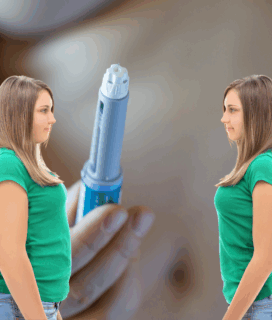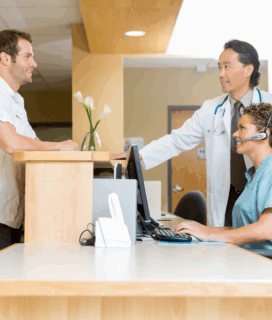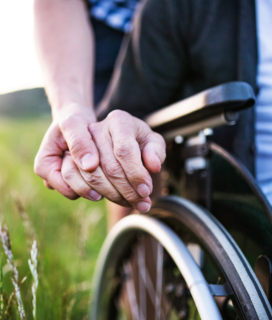400 Promenade Wy Ste 1500, Sugar Land, TX 77478, United States

Generator Safety Guide 101 – Power Outages, Hurricane Beryl Aftermath!

⚠ Safety Alert: Generator Use After Hurricane Beryl
As Houston increasingly faces natural disasters like freezes, hurricanes, and storms, it is crucial to stay informed and prepared to ensure your family’s safety.
Stay Safe During Power Outages here are a few Important Tips for Using Generators Safely!
Hurricane Beryl has left a significant impact on Southeast Texas including Houston, causing widespread power outages that are expected to last for several days. As CenterPoint and Texas officials work tirelessly to restore power to nearly 3 million customers, many households are relying on generators to keep their homes powered.
While generators can be a lifesaver during these times, it’s crucial to be aware of the dangers associated with their use, particularly the risk of Carbon Monoxide (CO) Poisoning.
Understanding Carbon Monoxide
The Dangers of Carbon Monoxide
Carbon monoxide (CO) is an odorless, colorless gas produced by burning fuel. It can accumulate in enclosed spaces, posing a serious health risk to those who inhale it. Because it is impossible to detect without specialized equipment, carbon monoxide is often referred to as the “Silent Killer.”

Symptoms of Carbon Monoxide Poisoning
Recognizing the symptoms of carbon monoxide poisoning can save lives. Early symptoms can be mistaken for the flu or food poisoning, so it’s important to be vigilant if you’re using a generator. Common symptoms include:
- Headaches
- Dizziness
- Nausea
- Vomiting
- Chest pain
- Confusion
- Weakness
- Shortness of breath
In severe cases, carbon monoxide poisoning can lead to loss of consciousness, permanent brain damage, or d*eath.
Essential Safety Tips for Using Generators

Since carbon monoxide is undetectable by human senses, it is essential to take preventative measures when using generators.
To ensure your safety and the safety of your loved ones, follow these critical guidelines when using a generator:
1. Placement is Key
Always Use Generators Outdoors
Operate generators outside, away from windows, doors, and vents to prevent carbon monoxide from entering your home. Always place generators at least 20 feet away from your house.
Never Use a Generator Indoors
Generators should never be used inside homes, garages, or any enclosed spaces. Even if you think there is adequate ventilation, carbon monoxide can still accumulate to dangerous levels.
2. Proper Ventilation
Ensure that the area around the generator is well-ventilated. Generators need ample airflow to operate safely. Using them in an enclosed space can cause CO to build up quickly.
3. Install Carbon Monoxide Detectors
Install Battery-Operated CO Detectors
Installing battery-operated or battery-backup CO detectors in your home is a critical safety measure. Place detectors on every level of your home and outside sleeping areas to ensure that everyone will hear the alarm if CO levels become dangerous.
4. Maintenance and Inspection
Regularly Inspect Your Generator
Regularly inspect your generator for signs of damage or wear and tear. Proper maintenance can prevent malfunctions that could lead to CO production. Follow the manufacturer’s instructions for routine maintenance and oil changes.
5. Fuel Safety
Store Generator Fuel Safely
Store fuel for your generator in approved containers, away from living areas. Never refuel a generator while it is running or hot to prevent accidental ignition of the fuel.
6. Keep Generators Dry
Protect your generator from rain and moisture to prevent electrical hazards. Place it under a canopy or tent, ensuring it is dry and properly grounded.
7. Prioritize Children’s Safety
Keep Children Away from Generators
Ensure that children are kept away from generators at all times. The generator’s exhaust contains dangerous carbon monoxide, and the equipment itself can get extremely hot, posing burn risks.
8. Stay Informed and Stay Alert to Symptoms
Be aware of the symptoms of carbon monoxide poisoning. If you or anyone in your household begins to feel dizzy, weak, nauseous, or experiences headaches while the generator is running, immediately move to fresh air and seek medical attention.
What to Do in Case of CO Exposure?
Using Generators to Cope with Texas Heat? Be Aware and Know What to Do If You Suspect Carbon Monoxide Poisoning.
If you or someone in your home experiences symptoms of carbon monoxide poisoning, follow these steps immediately:
1. Move to Fresh Air Immediately: Get outside or to an area with fresh air as quickly as possible.
2. Call for Help: Dial 911 or your local emergency number to get medical assistance.
3. Notify Responders: Let emergency responders know that CO exposure is suspected so they can bring the appropriate equipment to help.

Additional Precautions While Using Generators for Domestic Use
Educate Your Family: Make sure everyone in your household understands the risks of carbon monoxide and the importance of the safety measures mentioned above.
Develop an Emergency Plan: Have a plan in place for how to respond to a CO alarm. Ensure everyone knows where to go and how to get there quickly.
Regularly Test CO Detectors: Check the batteries and functionality of your carbon monoxide detectors monthly to ensure they are working correctly.
Additional Resources for Guidance and Safety in View of Hurricane Beryl
To further ensure your safety and preparedness following Hurricane Beryl, here are some valuable resources for guidance and safety:
- Texas Division of Emergency Management – For emergency updates and preparedness tips.
- CenterPoint Energy – Outage Information – For the latest updates on power restoration efforts.
- Houston Health Department – For local health advisories and resources.
- Texas A&M AgriLife Extension Service – For comprehensive emergency preparedness and safety information.
Conclusion
We stand in solidarity with all those affected by Hurricane Beryl. Our hearts go out to everyone still dealing with the aftermath, including the widespread power outages. While generators are invaluable during these times, it’s essential to use them safely to protect your family from the dangers of carbon monoxide poisoning.
By adhering to these guidelines, you can ensure the safety of your household during power outages caused by natural disasters.
Please share this information with friends and family to help raise awareness. For ongoing updates, tips, and assistance, follow us on our social media channels.
As a trusted healthcare provider in Telfair – Sugar Land, Southwest Urgent Care is dedicated to supporting our community with comprehensive medical services. Our services include pediatric urgent care, on-site lab testing, and telemedicine consultations to ensure your family’s health and safety.
#GeneratorSafety #CarbonMonoxideAwareness #HurricaneBeryl #StaySafeHouston
- SHARES
Post
Tweet
Send
Our Latest Posts

20 Most Asked Questions About Weight Loss Injections: Ozempic®, Wegovy®, Mounjaro®, Zepbound™ and More
Read More

Swimming Safety for Kids: Pool Season Safety Tips and Health Risks Every Parent Should Know
Read More
Popular Services
Opening Hours
- Monday: 9:00 am to 7:00 pm
- Tuesday: 9:00 am to 7:00 pm
- Wednesday: 9:00 am to 7:00 pm
- Thursday: 9:00 am to 7:00 pm
- Friday: 9:00 am to 7:00 pm
- Saturday: 9:00 am to 3:00 pm
- Sunday: Closed
© 2022 Southwest Urgent Care. All Rights Reserved



